By 7 p.m., the sun had set and groups of young men had begun to gather inside a small, nameless restaurant on a narrow street in Tapachula, Mexico. Anywhere else in the city, a hub of transit and commerce about ten miles north of the Guatemalan border, there would be no mistaking that you were in Latin America: The open colonial plaza, with its splaying palms and marimba players, men with megaphones announcing Jesus, and women hawking woven trinkets and small bags of cut fruit suggested as much. But inside the restaurant, the atmosphere was markedly different. The patrons hailed not from Mexico or points due south but from other far-flung and unexpected corners of the globe—India, Pakistan, Eritrea, Cameroon, Sierra Leone, Congo. Men, and all of the diners were men, gathered around tables, eating not Mexican or Central American fare but steaming plates of beef curry, yellow lentils, and blistered rounds of chapati. The restaurant’s proprietor, a stern, stocky Bangladeshi man in his thirties named Sadek, circulated among the diners. He stopped at one table of South Asian men and spoke to them in Hindi about how much they owed him for the items he’d collected on their tab. The waitress, patiently taking orders and maneuvering among the crowds of men, was the only Spanish speaker in the room.
Outside, dozens of other such men, travelers from around the world, mingled on the avenue. They reclined against the walls of restaurants and smoked cigarettes on the street-side balconies of cheap hotels. They’d all recently crossed into the country from Guatemala, and most had, until recently, been held in Tapachula’s migrant detention center, Siglo XXI. Just released, they had congregated in this packed migrants’ quarter as they prepared to continue their journeys out of Mexico and into the United States. They had traveled a great distance already: a transatlantic journey by airplane or ship to Brazil; by car, bus, or on foot to Peru, Ecuador, and Colombia; through Panama, Costa Rica, and Nicaragua; on to Honduras, Guatemala, and into Mexico. Again and again, I heard their itinerary repeated in an almost metronomic cadence, each country a link in a daunting, dangerous chain. They’d crossed oceans and continents; slogged through jungles and city slums; braved detention centers and robberies; and they were now, after many months, or even longer, tantalizingly close to their final goal of the United States and refugee status.
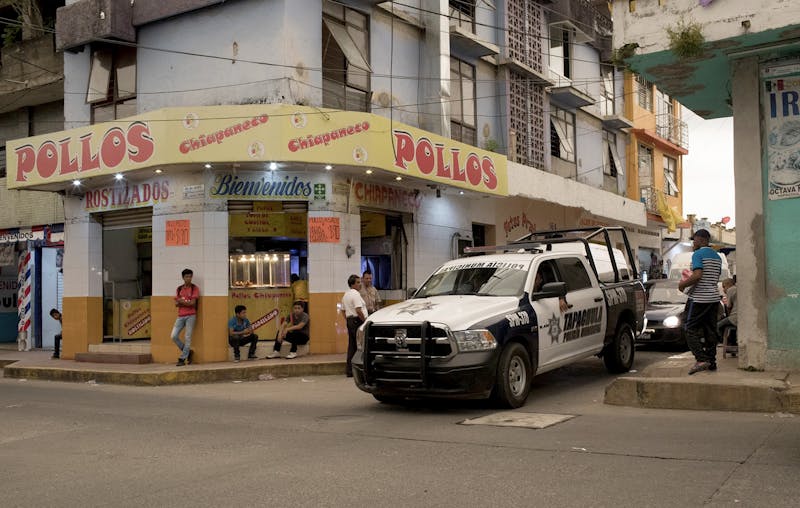
They are the extreme outliers of a global migration crisis of enormous scale. Today, more than 65 million people around the world have been forced from their homes—a higher number than ever recorded, as people flee war, political upheaval, extreme poverty, natural disasters, and the impacts of climate change. Since 2014, nearly 2 million migrants have crossed into Europe by sea, typically landing in Italy or Greece. They hail from dozens of countries, but most are from Syria, Afghanistan, Iraq, and Nigeria—countries struggling with war, political repression, climate change, and endemic poverty.
Their passage to supposed safety, which takes them across Libya and the Sinai, as well as the Mediterranean, has become increasingly perilous. According to the United Nations High Commissioner for Refugees, nearly 150,000 people crossed the Mediterranean in 2017. More than 3,000 are believed to have drowned. Stories of detention in Libya, as well as physical and sexual abuse, are commonplace among those who manage to make it to Europe. A recent CNN report depicted a Libyan slave auction, where people were being sold for as little as $400. Even the lucky ones who wash up on Europe’s shores may end up stuck for years in transit camps and detention centers in the south of the continent, in some cases only in the end to be deported. In 2013, in an effort to curb migration and ease the burden of migrants within its borders, the European Union began ramping up deportations. In 2016, nearly 500,000 people were deported from Europe.
While the global drivers of migration have not subsided—devastation in Syria and Afghanistan, political repression in parts of sub-Saharan Africa—200,000 fewer migrants attempted to cross into Europe in 2017 than the year before. In response to the migrant crisis, European countries have sent strong messages that newcomers are no longer welcome; they’ve built fences to stop refugees from crossing their borders and elected far-right politicians with staunchly anti-immigrant messages. Meanwhile, most asylum cases are stalled in overburdened court systems, with slim prospects for any near-term resolution, which leaves many migrants stuck in the wicked limbo of a squalid, under-resourced refugee camp or austere detention facility. Today, European authorities have stiffened their resistance not only to new arrivals, but to the hundreds of thousands of asylum-seekers who arrived years before and remain in an eerie liminal zone: forbidden to live or work freely in Europe and unwilling, or often unable, to go home.
Because of the high risks of crossing and the low odds of being permitted to stay, more and more would-be asylum-seekers are now forgoing Europe, choosing instead to chance the journey through the Americas that brings them to Sadek’s restaurant in Tapachula. Each year, thousands of migrants from the Middle East, Africa, and Asia make their way to South America and then move northward, bound for the United States—and their numbers have been increasing steadily. It’s impossible to know how many migrants from outside the Americas begin the journey and do not make it to the United States, or how many make it to the country and slip through undetected. But the number of “irregular migrants”—they’re called extra-continentales in Tapachula—apprehended on the U.S. side of the border with Mexico has tripled since 2010.
They remain a tiny fraction of the hundreds of thousands of Mexicans and Central Americans crossing into the United States. But it is a hastening trickle that may well become a flood. “These ‘extra-continental’ migrants will probably increase,” said Roeland De Wilde, chief of mission for the International Organization for Migration in Costa Rica, “given the increased difficulties in entering Europe, relative ease of entry in some South American countries, and smugglers’ increased organization across continents.”
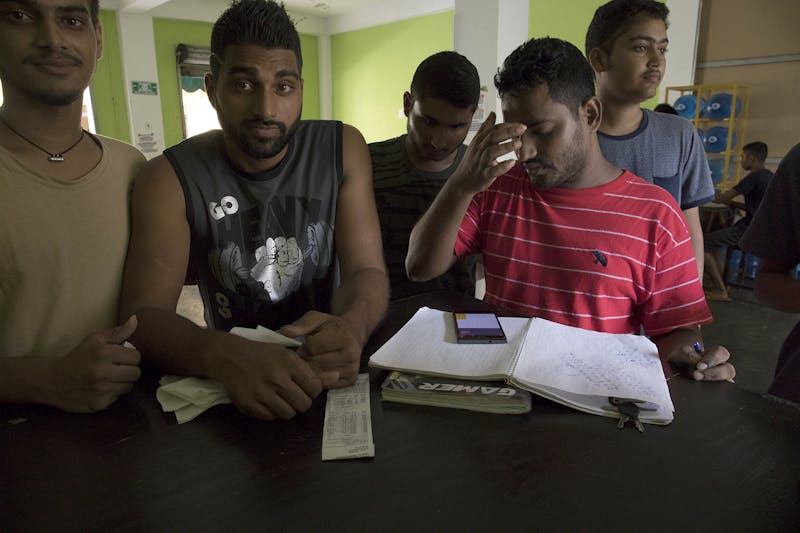
One tragic lesson of the extra-continentales is that no set of governments, however callous, can solve the migration crisis by closing its doors to refugees seeking shelter. All Europe has done is redirect the flow of vulnerable humanity, fostering the development of a global superhighway to move people over this great distance. The doors will not hold, and neither will the fences. You can build a wall, but it will not work. Desperate people find a way.
“Cette route,” a French-speaking man from Cameroon told me, one sweltering afternoon in Tapachula on the breezeless balcony of a hotel frequented by irregular migrants, “n’existe pas sur le map.” This route doesn’t exist on the map.
Tapachula is a common stopover for extra-continentales traveling north toward the United States. The state of Chiapas, located along the narrow isthmus in North America’s topographic waistline, acts like a funnel through which nearly all migrants must pass. To get to the Americas, they usually purchase plane tickets from their home countries—often borrowing large sums of money from family members or high-interest loan sharks—or, less commonly, they stow away in ships departing from the western coast of Africa for South America.
The largest groups tend to be from India, Pakistan, China, Bangladesh, Nepal, and Congo—demographics that do not, or likely would not, fare well in European immigration courts—but others come from Iraq, Afghanistan, Eritrea, and even Syria, too. Their first stop is most often Brazil, which has a favorable reciprocal visa law, meaning that, if a Brazilian can readily acquire a visa to visit their country—most Brazilians can easily enter Congo, say, if they choose—migrants from that country will receive the same courtesy in Brazil. The vast majority of extra-continentales are young men in their twenties and thirties who claim to be fleeing some danger back home. Their goal is to build a new life for themselves abroad and send money back to their families. Those who have wives and children might send for them later on, but many are single, striking out alone.
Most often, once migrants arrive in Brazil, they don’t have a set plan for their next steps. They have to figure out the route northward on their own and, like drawing a constellation in the sky, connect the dots from location to location. They do so by using their wits, their cash, information from friends who have already made the journey (most commonly received via WhatsApp messages or Facebook posts), and by tapping into a loosely affiliated network of people-smugglers they find along the way. They can expect to encounter versions of Sadek’s restaurant and this stretch of Tapachula in other countries—places where they can eat, sleep, and share information, like stopovers described in an open-source guidebook for people who are never going home.
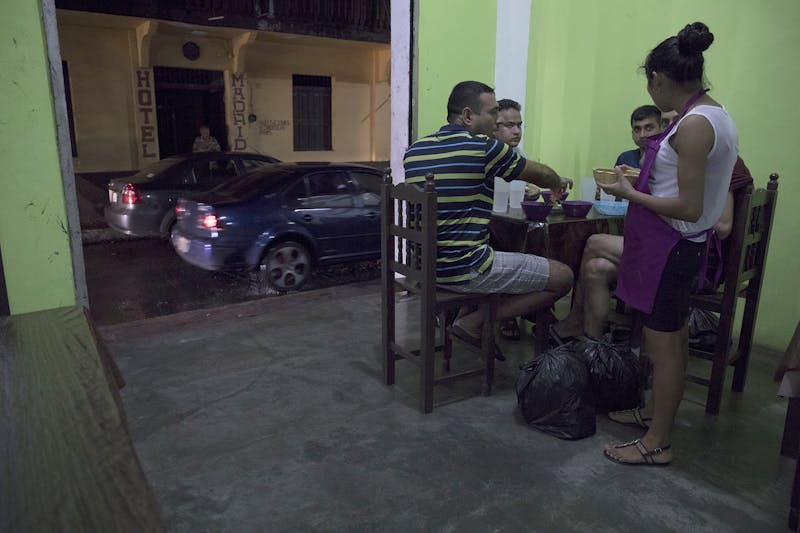
That night in Tapachula, in the corner of Sadek’s restaurant that abuts the street, four tired-looking men from Pakistan sat together at a table, their phones plugged in to the wall. Plastic bags nestled in a heap at their feet, neat little parcels tied with fastidious knots. When their food arrived, the men leaned over the plates and tore into the stacks of chapati. For the past few days, they had been held in an immigration detention center. They were finally released just a few hours earlier, each one carrying a salgo conducto, an official government safe passage document that required him to leave the country within a few days. After several months on the move, the bags at their feet contained their only remaining possessions.
The group’s unofficial leader, Muzammil—a mild-mannered 23-year-old from Kashmir with a narrow, angular face and a sharp hook of a nose—said that it wasn’t hard for him to find someone to help him organize passage to Brazil. He grew up in a family of corn farmers and shopkeepers and had fled Pakistan three years earlier, after receiving death threats for his participation in a Kashmir separatist political party. He made it to Senegal, where he had friends from home, and worked in a shop for a little over a year. He saved and borrowed money from family members. A Pakistani man in Senegal who served as a kind of informal travel-agent-meets-smuggler helped him purchase plane tickets to São Paulo, Brazil.
Throughout his journey, Muzammil kept in touch with the agent-smuggler, whom he had paid $7,500 for his services, on his smartphone, via WhatsApp. (Smartphones are the migrants’ most prized possessions and often their lifelines.) His parents, who were still in Pakistan, had given him some money, which he used to help cover his basic needs, including a couple of months’ rent in São Paulo. Muzammil wrangled a job at a place called Reet Namaste, an Indian restaurant in an upscale neighborhood an hour’s bus ride outside the city center, and he lived in a shared apartment with other Pakistani migrants. He spent two months serving chai and Indian dishes to Brazilians and tourists, until he had enough money to make the arrangements to move north.
By the time he’d reached Tapachula, ten weeks after setting out from Brazil, Muzammil was in debt to his family by about $13,000 for plane fare, food and lodging, smugglers, and the agent. This amount, which is typical for migrants making the journey through the Americas, was up to five times more than it would cost to go to Europe. But to Muzammil, it was worth it.
“I needed to get to a safe country,” Muzammil explained, echoing what many irregular migrants told me. “I don’t like Europe, because in Europe, they don’t give us papers; they will send us back. All that money would be spoiled.” So he found a way to get to the United States.
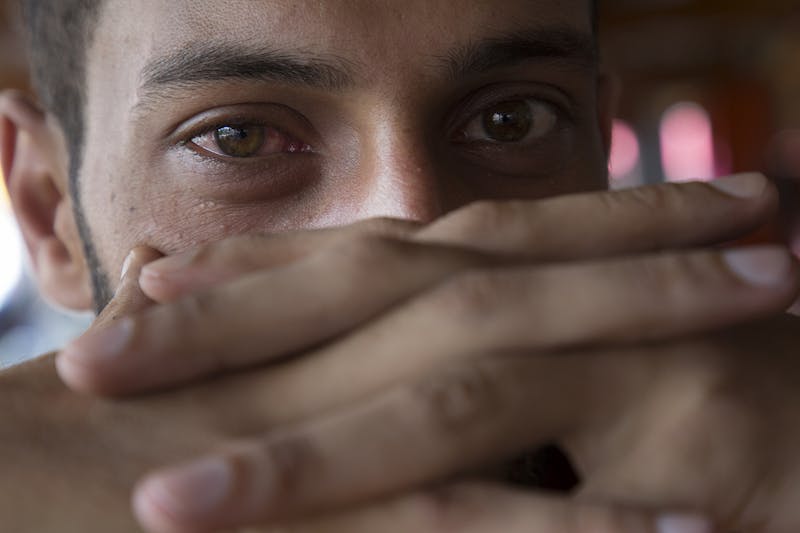
Muzammil and his companions were exhausted from their months on the road and their time in detention, but they felt like celebrating. They were still more than 1,000 miles from the Rio Grande and the United States—but they felt like they’d made it. They bought beers at a local store and drank them down, then bought some more and headed over to Sadek’s. On the restaurant wall, an eight-by-ten sheet of paper advertised a nearby business: Viajes Xiinbal travel agency. Here they would buy tickets to Reynosa, Matamoros, Tijuana, Nuevo Laredo—border towns from which one can slip from Mexico into the United States. After spending tens of thousands of dollars, crossing numerous international borders, and risking their lives, they were now achingly close.
“Soon we will be in the United States,” Muzammil said, and smiled.
The route northward from Brazil to the United States is a new one. In fact, just a few years ago, most migration in the region moved in the opposite direction. The earthquake that struck Haiti in January 2010 sent thousands of people suddenly searching for new homes, and Brazil, with its strong economy and welcoming immigration policies, offered the promise of a better life for many. The next year, the completion of the Transoceanic Highway, which connected Peru to Brazil and carved a path through the Amazon, made it even easier for migrants to travel south. Haitians flocked to Panama in boats by the thousands, then bumped their way by road down to Brazil.
“Brazil had jobs, and people could get papers in Brazil,” explained Letícia Mamed, a professor and migration expert based in São Paulo. The country was an attractive destination for Haitians fleeing circumstances back home.
By 2014, the route had become so crowded with migrants that the Brazilian government declared a humanitarian crisis and set up temporary camps in parks and central squares throughout the southwestern state of Acre, on the border with Peru. Migrants slept outside, on benches, beneath trees, atop their belongings.
Then, the next year, the Brazilian economy crashed. Jobs became scarce, and the fall of the Brazilian real meant that the remittances migrants sent home were worth far less. Suddenly, Brazil was far less attractive for immigrants. Many decided to leave—for Chile, Peru, Argentina—heading back northward in the direction they’d come from. “The route they’d helped create in 2010 was now open in the other direction,” said Mamed, and the same network of smugglers who facilitated travel one way simply reversed their operations: A north-to-south migration flow became a south-to-north flow. Brazil went from being a longed-for destination to the start of the second leg of a long, hard journey.
The path northward takes most extra-continentales through Rio Branco, the capital city of the remote Amazonian state of Acre. Acre is so far from major population centers that it’s referred to as “Deep Brazil,” or, as many people joke in São Paulo, “the state where dinosaurs live.” Getting there by plane from São Paulo takes about eight hours and requires at least one connection; by road, as most migrants go, the journey lasts about three days. From Rio Branco, they arrange buses or vans for the five-hour trip to the Peruvian border.
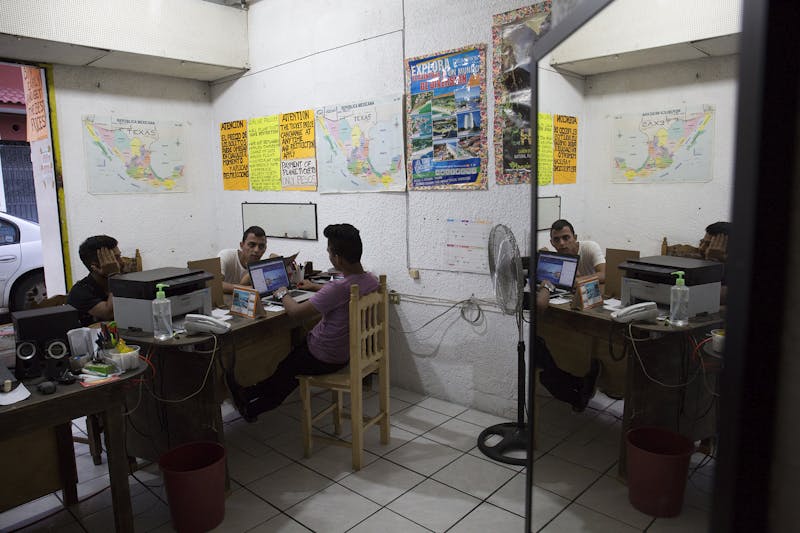
As the road heads west, it skirts the area where Brazil, Peru, and Bolivia all meet, and rolls through a deforested swath of the Amazon—wide, open plains that were once jungle, where cows graze and corn now grows, and where the few surviving Brazil nut trees stand alone in the middle of the rippling, fertile plains. As they approach Peru, the vans and buses drop the migrants off before the border, so they can skirt the checkpoint on foot.
Despite the thousands who cross here each year, officials in Brazil are reluctant to acknowledge the steady flow of people through their country. In November, when I visited the human rights division of the Rio Branco government, which oversees migration issues in Acre, the head of mission assured me that “very few” migrants—hardly any, really—passed through on their way to the United States. That I had met so many in Mexico who had mentioned traveling through Rio Branco perplexed him; he assured me I must have had it wrong. It was the same at the border with Peru and in Peru itself: No one seemed to know much about the migrants who slip through. This is, of course, by design: The migrants leave behind hardly a trace.
Just over the Peruvian border, the migrants enter the sleepy town of Iñapari. They will have arranged in advance for vehicles to transport them to Peru’s interior. Often, they stay over in Puerto Maldonado, a seedy tourist town along the Madre de Dios River, toward which the Transoceanic Highway runs like a slick track through the Amazon, some four or five hours from the border. From there, migrants can make their way to Lima and into Ecuador and then on to the border with Colombia. It is at this point, on the teetering edge of South and Central America, that the journey turns from dangerous to deadly.
The Darién Gap, or “the jungle,” as most migrants refer to it, is the most treacherous stretch of the journey north. This 2,200-square-mile tropical forest that connects Colombia and Panama is thick and terrible, the most horrendous territory, the migrants tell me, you can imagine. Darién has a long history of attempted crossings and failed conquests. In 1698, William Paterson, a Scottish entrepreneur hoping to establish a trade center with access to both the Atlantic and the Pacific, set sail from his homeland for the dense stretch of land thousands of miles away, accompanied by 1,200 pioneers; but the territory was so unforgiving that within nine months most of the group were dead. Although Darién remains home to several indigenous communities, there are few settlements and no roads. This makes it excellent territory for armed groups like the Colombian FARC to run drugs under the cover of near-impassable jungle, and for migrants to pass.
Sitting at Sadek’s restaurant, drunk on Coronas, Muzammil told me he still had nightmares about the jungle. By this time, it was just Muzammil and his closest friend, Sanaullah, who was listening to music on his phone; the other two, drunk and tired, had gone back to their hotel to sleep it off. The four of them had met in Colombia, in a port town, by chance—they’d all been looking for a ride across the Darién. They joined together, and Muzammil, who spoke the best English, negotiated with a man who agreed to take them and about 20 other migrants through the Darién Gap for about $40 per person. Once in the thick of the jungle, however, the guide, money in his pocket, told everyone to wait for a few minutes while he dealt with a problem up ahead. “We waited four or five hours,” Muzammil said. “But he never came back.”
Stranded in the jungle, the group decided to keep going. The journey was supposed to take two days at most, according to the guide, and that was how much food each member of the expedition had packed—a few bottles of water, some packets of cookies, and some energy drinks. “We had to walk for seven days,” Muzammil said. They waded through rivers and crested mountains, their feet blistered and swollen, shoes filled with water. Dense thickets of thorny branches slashed their arms and legs. Muzammil turned an ankle, fracturing his foot. But they continued walking, surviving on water they drank from dirty ponds.
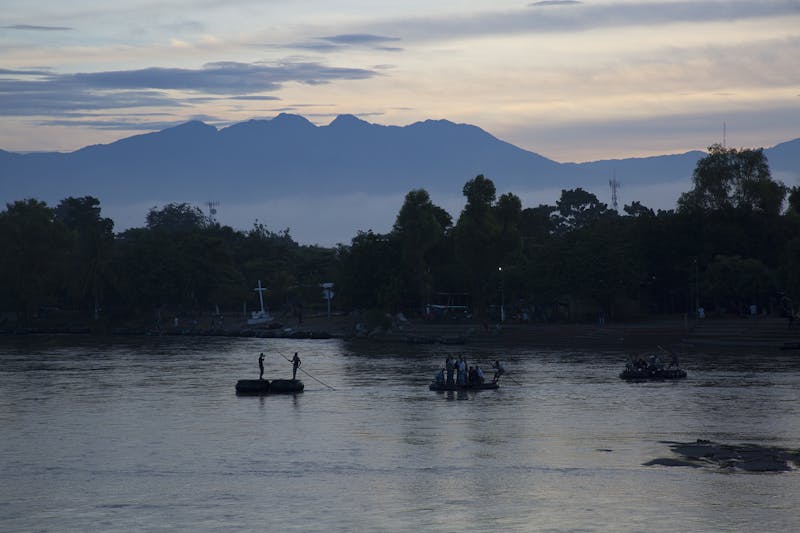
“My friend in the jungle tried to stop,” Muzammil said, referring to one of his companions back at the hotel. “He was very injured.” He lay on the ground and told the rest of the group to press on, that he couldn’t go any farther. Muzammil urged him to get up, telling him they were close to finally getting through, that it wouldn’t be much longer, but he wouldn’t budge. Muzammil began screaming at him, then beating him with a stick. The man yelped and moaned. “I beat him so hard,” Muzammil said. Eventually, his friend agreed to continue. It was morning, and they walked late into the night until, around 10 p.m., they made it out and into the hands of the Panamanian authorities.
Even after months on the road, Muzammil had not told his family the truth about how hard the travel had been. Instead, he led them to believe that he was on some highbrow round-the-world jaunt, posting photos on Facebook—selfies of well-dressed Muzammil in an airport, or a city square, or on the bank of some great body of water—that evoke a sense of adventure, an entrepreneur with an intrepid streak, ready to take on the world. “Nice!” his friends in Pakistan would comment. “Looking good, man!” There was just one subtle hint on Muzammil’s Facebook feed of what was really happening: a photo of him in front of a fountain, wearing a clean white sweatshirt and a pensive expression. “Difficult roads often lead to beautiful destinations,” he wrote in the caption.
Muzammil told me a story he’d heard about a woman who had attempted to make it across the Darién Gap. Several other migrants I spoke to had heard about her, too, at different times. She was from India and had been traveling to the United States with her twelve-year-old daughter. But she couldn’t make it through the jungle, Muzammil explained. Just like his friend, she sat down somewhere between Colombia and Panama and refused to move. “I can’t go on,” she said, and sent the rest of the group—her daughter included—on their way. She waited there to die, knowing that if she did, her body would likely never be found.
But she didn’t die. There, alone in the jungle, the story goes, she regained her strength, scrounged something to eat, and survived. Every now and then, another group of migrants comes across her in the Darién Gap. If they have extra food, they give it to her, and she tells them the right way to go, sending with them messages of love to her daughter, that she’s alive, she’s OK, not to worry.
The legend seemed to give Muzammil comfort as he recalled the horrors of the Darién Gap. “I thought we all might die there,” he said. “You can’t imagine that feeling.”
I asked Muzammil: If he had known how hard his journey would be, would he have ever left Pakistan? “I don’t know,” he answered. Then his eyes brightened, and he laughed. “Maybe you should ask me once I reach the United States.”
Not every extra-continentale makes it to the United States—and not all of them want to. Some find a new life for themselves as part of the infrastructure that facilitates, and profits from, the movement of people through the Americas. “Mexico is not just a country of migrant departure and transit,” explained Diego Lorente, director of the Fray Matías de Córdova Human Rights Center in Tapachula. “Increasingly, it is a destination.” Sadek, the restaurateur in Tapachula, left Bangladesh five years ago and made his way to Mexico along the same route taken by the men who now fill his restaurant and keep his business afloat. He was headed for the United States—“I don’t know the place,” he said when I asked him exactly where—to live with an uncle. He saved what money he could and borrowed more from family members to book a flight to Brazil. His uncle promised to help him with money along the way. Once he landed in Brazil, he traveled west, then pushed north, like all the others, through the Darién Gap, Central America, and into southern Mexico. But once Sadek arrived in Chiapas, his uncle stopped answering his calls.
“No one helped me,” Sadek told me in a singsong, almost poetic English one afternoon in his empty restaurant between mealtimes. “No family, far away, so sad, only me, only Sadek, here.”
Stuck in Mexico with no papers and almost no money—certainly not enough to buy his way across the U.S. border—Sadek saw an opportunity. There were migrants like him, more and more all the time; after months on the road, they were tired of eating unfamiliar food. (“Have you ever had these fried bananas?” Muzammil asked. “They are so bad!”) Sadek decided to open a restaurant to save some money. Though he didn’t know how to cook, he figured it out by trial and error and by calling his sister back in Bangladesh, who would narrate recipes to him. Some family members sent him money to help with the startup costs. As the restaurant became popular with the extra-continentales streaming into town, Sadek began to think that perhaps a life in Mexico was better than whatever he would be able to muster up north. So he applied for asylum papers to stay.
Several years into the business, he had trained a few young Mexican women to do the cooking, while he trudged around the restaurant, often clad in a T-shirt and basketball shorts, his rubber sandals dragging along the floor, keeping his accounts and collecting payment for food and other services. As well as offering a meal and providing a de facto community center—and phone-charging station—for migrants stopping over in Tapachula, Sadek acts as a kind of fixer. Families of migrants send him money, which he then uses to cover their food, hotel, and even sometimes plane tickets, acting as a middleman and taking a cut. He keeps track of all the transactions in scribbles on lined pages of an orange spiral-bound notebook. This is a part of the business he’d prefer to keep from the authorities and from me.
“Food, just for food,” he insisted when I stole a glance at his ledger. “You see?” He flashed the ledger my way—a scrawl of numbers and tallies dashed every which way across the page. And yet any time I ordered food, he just shouted a price and I paid him. There was no tally book, no receipt, no ledger, for me.
“We need onions,” one of the women from the kitchen told Sadek as we chatted in the dining room. He shook his head and waved her away. “No money, no money.” She tried again.
“No money!” he barked this time.
“Then no food!” she said. He pulled a wad of bills from his pocket and slapped some into her outstretched palm, then laughed. She rolled her eyes. He excused himself and moved toward the kitchen.
“I come back!” he said.
In his absence, an Eritrean man walked into the restaurant to charge his phone. We began chatting, but he was guarded and uneasy. He would only tell me where he was from and that he was headed to the United States. When Sadek returned to the dining room, the man looked at him warily, and then looked back at me. He seemed to sense there were things Sadek wouldn’t want me to know. “Why are you asking me these questions?” he asked. He shook his head. “Maybe later, maybe another time, maybe when I get to the United States.”

The man suddenly changed his mind when Sadek sat back down at the table and joined us. I wondered if Sadek had given him some signal allowing him to talk. He began to explain his route, incanting the familiar country-by-country order. While we spoke, and I jotted down notes, Sadek took hold of my necklace—a long chain with two interlocking pieces of clay—and began pulling it toward him as far as it would stretch, about a foot from my chest. I ignored him. His presence seemed to calm the Eritrean man, and it was helpful to have Sadek preoccupied while I spoke to his customer.
I asked the man how he knew where to go in all of the different countries in which he stopped. “We look at phones, we see the way, we ask questions, that’s all,” he replied. Suddenly, Sadek yanked my necklace, tugging me closer until I pulled away. “Me too, all alone, no family, just me, just business,” he said, before he dropped my necklace and walked back over to the register. Perhaps the conversation had moved too close to the logistics of the journey for his comfort. There was nothing threatening about Sadek, although with a swift glance he could make one of his migrant customers fall in line. They didn’t want to cross Sadek, and I could understand why.
“No more talking,” the Eritrean said. He removed his phone from the wall and walked out of the door, past a sign that read: IMMIGRATION LAWYER.
Later, I met this lawyer, a cheerful, portly young man from Tapachula who, sensing a need—and a market—in his hometown, had opened his firm. He had known Sadek since he’d arrived five years ago (he helped him win his asylum case), and he explained to me that the restaurant served as a kind of referral service for his legal business helping migrants who opted to settle in Mexico win their papers to stay.
I asked him the same question I put to the Eritrean man: How do these people find their way? Friends, social media, finding coyotes along the road, he said; plus people who can help them sort out lodging and rides, plane tickets to their next destination. “Families send money to these people and they help arrange the logistics,” he said. It’s not illegal, per se, but it verges close enough to human smuggling for Sadek to want to keep quiet about it. Very few migrants who pass through Sadek’s restaurant attempt to stay in Mexico, as he had, the lawyer said. They want to go to the United States, and they need people along the way to help them get there. “Every place has its Sadek,” he added.
Irregular migrants have risked everything to try to make it to the United States, believing that their chances of finding shelter are better there than in Europe. But, given the increasingly draconian immigration policies of the Trump administration, have they made a bad bet? Most extra-continentales know that immigration is complicated in the United States, but they see it as a set of bureaucratic obstacles that are easier to surmount than those in Europe and far easier than what they have endured to get there. Having struggled so mightily to reach Tapachula and the final leg of their journey, they should be forgiven for believing that the worst hardships are behind them. Focused, as they are, on simply surviving, it is hard for them to know the extent of the challenges that await them in the United States.
Yet consider asylum, the desired status at the end of their travels. While it is statistically much more probable to win asylum in the United States from Eritrea or Pakistan than, say, Mexico or El Salvador, there is no guarantee. Applying for and winning immigration relief is a cumbersome process that can take years and cost thousands of dollars. It is even harder to manage from detention, where they will remain for months, if not years, unless they are released on bond. (Immigrants from outside Latin America are often summarily denied bond; with few ties to the country and no fixed address, they are considered a flight risk.)
It’s difficult to find a trustworthy lawyer from detention, and it’s nearly impossible to apply successfully for asylum or other immigration relief on one’s own. Stuck in detention, immigrants often become overwhelmed and give up. “It’s hard enough for immigrants to fight their cases when they’re in detention,” said Laura Rivera, staff attorney for the Southern Poverty Law Center’s Immigrant Justice Project. “Even those who do have lawyers, they give up. It’s heartbreaking.”
The Trump administration’s efforts to crack down on immigration have made that already bad situation significantly worse. In the first seven months of Trump’s presidency, U.S. Immigration and Customs Enforcement arrested nearly 100,000 people suspected of being in the country illegally—a 43 percent increase over the previous year. Currently, an average of 38,000 people are housed each day in U.S. detention centers, and the Trump administration, which plans to build more immigration jails around the country, expects that number to increase to 48,000.
Not only does the government want to detain more migrants, but it is also detaining them for longer periods of time. A backlog of more than 600,000 cases is currently pending before immigration courts, meaning that undocumented immigrants could remain in detention centers for years before their cases are heard. Moreover, judges have become increasingly likely to deny detainees’ petitions to be released on bond. According to a 2009 directive, asylum-seekers with credible claims that they fear for their lives back home should be released from detention if they do not pose a serious flight risk or danger to the community. But since Trump was inaugurated, the vast majority of asylum-seekers—and particularly irregular migrant asylum-seekers—have been summarily detained without bond. “We’re seeing more asylum-seekers in detention now, and for longer periods of time,” said Blaine Bookey, legal director of the Center for Gender and Refugee Studies at the University of California, Hastings.
A group of West Africans I met one night at Sadek’s were slightly more cautious about their prospects in the United States, at least compared to the other migrants I met in Tapachula and Acre. Two young men from Nigeria knew people who had been locked up in the United States and then deported home. “If I get to the U.S., and they say they will send me back, it’s better they kill me,” said Stanley, an aspiring recording artist from Nigeria. “After all this risking my life, everything, it’s better they kill me.”
“We love America,” his friend, Steve, said. They had chosen to migrate there and not Europe, after all. “Why they don’t want us to come there when we love it so much and will work so hard for the country?”
“I need to prepare my affairs,” a man from Sierra Leone said. “Right now, with that president in the United States, I have to be careful.” He wanted to cross only when he was confident he’d arranged passage in a way that would ensure he could evade detection.
Few extra-continentales seem to understand that if they make it across the U.S. border, they might be stuck in detention for months, if not years. Prolonged detention is, according to Laura Rivera, by design. The government is banking on the fact that detention is so unpleasant, and the prospect of fighting an immigration case so forbidding, that many immigrants will just give up and opt to be deported. And in spite of the miles and miles of ocean and desert and jungle that they’ve crossed, and all they’ve risked and endured to make it to the United States, some do, in fact, finally surrender.
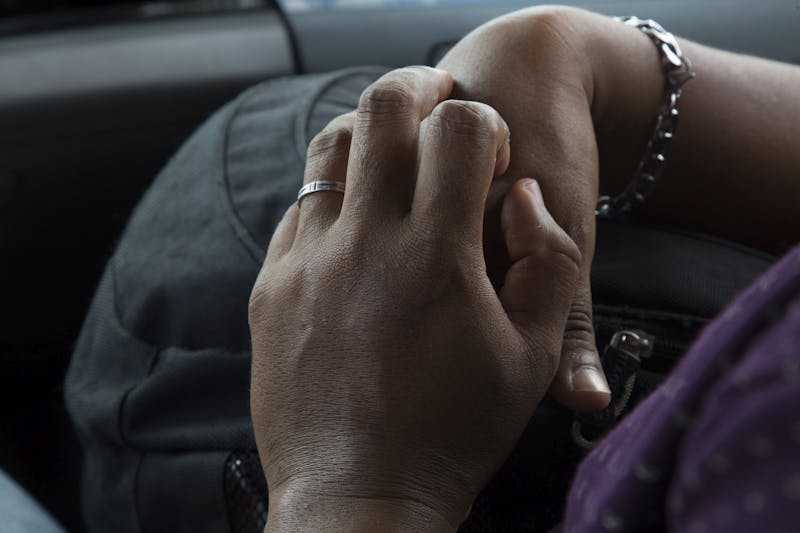
They will have to give me protection,” Henok, an Eritrean man in his thirties, told me as we sipped juice at a café in Tapachula’s central square. “I cannot go back to Eritrea, so I know they will have to protect me in the United States.” It was a matter of human rights, he said.
Henok, a short, muscular man in his thirties with close-cropped hair and searching eyes, was deeply critical of his home country, which he fled to avoid mandatory army conscription and in search of what he calls “psychological freedom.” In Eritrea, he explained, you can be imprisoned merely for your beliefs, so you hold those beliefs close and keep quiet. Who knows if your neighbor or your friend is working for the government and might turn you in? “This is not freedom.”
After he left Eritrea, Henok lived for a while in South Sudan and then South Africa, working as a truck driver and eventually starting his own trucking company. He was dressed that evening in Tapachula in crisp jeans, a maroon-and-white-striped collared shirt, over which hung a silver chain, and faux-leather loafers with no socks. He took a sip of his mango juice. “Money is no problem,” he insisted. “I have money. It’s not for money that I am going.” It was the promise of freedom in the United States.
I asked him when he was planning to depart. “Tomorrow,” he said. He had already visited the Xiinbal travel agency and purchased his plane tickets to Reynosa, Mexico, by way of Mexico City, where he would spend the night in the terminal awaiting his connection. In Reynosa, he would pay someone to help him cross the border and then, once on the other side, he would turn himself in to the U.S. authorities and begin the process of applying for asylum.
“I know it won’t be easy,” Henok said, as if reading my mind about his rosy-eyed picture of what awaited him up north. “But in the U.S., I will get my papers, and I will be free.” The passage across oceans and trudging through continents would be worth it, he said. If he could make it through the Darién Gap, he could make it in the United States.
I offered him a ride to the airport the next day, and he accepted. He seemed nervous when I picked him up from his hotel. It showed in the way he sat in the car: stalk-straight, his backpack clutched on his lap, having turned down my offer to put it in the trunk. The man at the travel agency had printed out the plane ticket and highlighted the details: flight number, city, departure time, his name. He kept reviewing the details of his ticket over and over. He was wearing the same sharp outfit as the night before—one had to dress to impress on such a journey—as well as a ring and a bracelet he bought in Mexico, to replace the ones that thieves had snatched from him in the Darién Gap. “It’s not real,” he said, referring to the silver with a shrug. At 5:57 p.m., his AeroMexico flight to Mexico City would take off from Tapachula. He glanced once again at the clock. “How long until the airport?” he asked. I assured him that we had plenty of time.
Inside the airport terminal, he approached the ticket counter. He was nervous, offering up his itinerary and folded salgo conducto—the only identification document he had—to the woman behind the counter. She checked him in and pointed him wordlessly to the security entrance. Henok walked slowly but assuredly through the bright terminal, past the kiosk selling Chiapas-made coffee and chocolate and past a group of chattering young migrants from India who, as it happened, were on Henok’s flight and also, like him, United States–bound. At the security checkpoint, an officer reviewed Henok’s documents and then waved him on. Henok looked relieved. Before rounding the corner and disappearing from sight, he turned and flicked a quick wave my way. And then he was gone, nearly airborne, on to America and the next unknown.
Reporting for this story was supported by the International Women’s Media Foundation.
